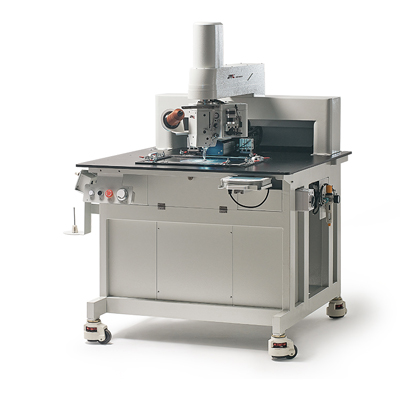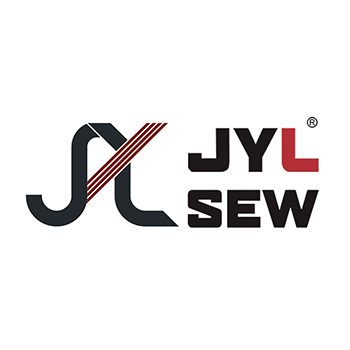Zigzag Sewing is a versatile and creative technique that’s popular for everything from edge finishes to decorative stitches. However, even seasoned users sometimes face issues like skipped stitches, uneven stitching, and thread tension challenges when using zigzag settings. Understanding these common problems and knowing how to resolve them can lead to smoother, more professional-looking results.

1. Skipped Stitches in Zigzag Mode
Problem: Skipped stitches occur when the needle fails to pick up the bobbin thread during the zigzag stitch, leading to gaps or breaks in the stitching pattern.
Solution:
Use the Correct Needle: Make sure you’re using the right needle size and type for your fabric. For stretchy fabrics, consider using a ballpoint or stretch needle, as it helps prevent skipped stitches.
Check the Needle’s Condition: A dull or bent needle is a common cause of skipped stitches. Replace it with a new one, as this simple fix can often solve the issue.
Adjust Needle Position and Thread Tension: If stitches are still skipping, try adjusting the needle’s position or slightly loosening the upper thread tension.
2. Uneven Zigzag Stitch Width
Problem: Zigzag stitches with inconsistent width can create an uneven appearance, making the stitch look unprofessional.
Solution:
Set Machine Speed and Fabric Tension Carefully: Ensure you’re guiding the fabric evenly and not pulling it, which can distort the stitch width. For beginners, it’s often helpful to slow down the machine speed to gain better control.
Adjust Presser Foot Pressure: Some machines allow you to adjust the presser foot pressure. Reducing the pressure on thick fabrics or increasing it on thin fabrics can help create even stitch widths.
3. Tension Issues Leading to Loose or Tight Stitches
Problem: Incorrect thread tension can cause zigzag stitches to be either too loose (causing loops) or too tight (causing puckering).
Solution:
Experiment with Tension Settings: Start with the manufacturer’s recommended tension for zigzag stitching, then make small adjustments based on the material’s thickness. Test on a scrap piece of fabric to find the ideal setting.
Adjust Bobbin and Upper Tension Together: If adjusting the upper tension doesn’t solve the issue, try balancing both the upper and bobbin thread tension until the stitches lay flat without puckering or looping.
4. Thread Breaking During Zigzag Stitching
Problem: The thread may break frequently, especially when creating wider zigzag stitches.
Solution:
Use Quality Thread: Low-quality or old thread can easily break, especially when the needle makes multiple side movements in zigzag stitches. Choose a high-quality, durable thread for best results.
Check Needle Size and Type: If the thread is breaking despite using good quality, it may be due to an incompatible needle. For thicker thread, a larger needle eye is usually required.
Reduce Stitch Width: If the stitch width is set too wide for the fabric type, it may create extra tension on the thread, leading to breakage. Try narrowing the stitch width to reduce tension on the thread.
5. Puckering on Lightweight Fabrics
Problem: Puckering occurs when the fabric bunches up between stitches, especially common in lightweight materials when using zigzag stitching.
Solution:
Use a Stabilizer: Placing a stabilizer or backing under lightweight fabrics helps to hold the material in place and prevent puckering. Tear-away or water-soluble stabilizers are both good options.
Reduce Stitch Length: Shortening the stitch length can help create a smoother stitch line, reducing the tendency for fabric to gather.
Lower the Upper Thread Tension: Reducing the upper thread tension slightly can prevent the thread from pulling too tightly, which helps keep the fabric flat.
6. Fabric Not Moving Smoothly Under the Presser Foot
Problem: Sometimes, fabric may get stuck or drag under the presser foot, resulting in irregular stitch formation.
Solution:
Check Feed Dogs: Ensure the feed dogs are raised and clean, as they are responsible for moving the fabric smoothly under the presser foot. If they are lowered or dirty, fabric movement can be restricted.
Choose an Appropriate Presser Foot: Certain presser feet, like the zigzag foot, are specifically designed for side-to-side needle movement. Using a straight stitch foot, for example, could cause issues with fabric feeding and even needle breakage.
Use an Even Feed Foot (Walking Foot): For tricky fabrics like vinyl or silk, an even feed foot or walking foot can help maintain smooth fabric movement and prevent puckering.
7. Misaligned Stitches When Changing Stitch Width
Problem: When adjusting the stitch width mid-sewing, zigzag stitches may become misaligned, leading to inconsistent stitching.
Solution:
Avoid Adjusting Width Mid-Stitch: For best results, avoid changing the stitch width while actively sewing. Instead, pause stitching, adjust the width, then resume sewing for a more consistent stitch line.
Practice Stitch Consistency: If adjustments are necessary, practice stopping and adjusting on scrap fabric to get a feel for the machine's responsiveness to width changes.
8. Uneven or Wavy Stitch Lines
Problem: Wavy or crooked stitch lines are often a result of fabric movement issues, tension problems, or lack of control during stitching.
Solution:
Use Fabric Stabilizers on Thin Fabrics: Stabilizers can help prevent lightweight fabrics from distorting during sewing.
Slow Down the Stitching Speed: Controlling the sewing speed helps maintain evenness in the stitch line, especially if you’re guiding the fabric by hand.
Use the Right Stitch Settings: Each fabric requires specific settings, so make sure the stitch length and width are appropriate for the fabric’s type and thickness.
9. Fabric Tunneling Between Zigzag Stitches
Problem: Fabric tunneling happens when the zigzag stitch pulls fabric edges inward, creating a “tunnel” effect, especially on light fabrics.
Solution:
Shorten Stitch Length: A shorter stitch length can reduce the tension on the fabric, preventing it from pulling inward.
Increase Tension Slightly: Raising the upper thread tension slightly can help keep the stitches tight and prevent tunneling.
Use a Stabilizer: Adding a stabilizer under the fabric helps keep the fabric flat and prevent distortion between stitches.
10. Machine Jamming or Locking Up During Zigzag Sewing
Problem: Occasionally, machines may jam or lock up when stitching in zigzag mode, which can be due to thread tangling, needle position issues, or mechanical malfunctions.
Solution:
Re-thread the Machine: Carefully check both the upper and bobbin threading to ensure there are no tangles or missed guides, which can lead to jamming.
Clean the Bobbin Area: Dust or lint in the bobbin area can restrict movement and cause jamming. Regular cleaning and oiling of the machine can help prevent this.
Check Needle Position: Some machines have specific needle positions for zigzag stitching. Ensure the needle is correctly set to avoid issues with movement.
With these solutions, common zigzag sewing problems can be minimized, ensuring smooth, consistent, and high-quality stitching. By understanding the specific needs of your fabric, stitch type, and machine settings, you can achieve professional results even on challenging materials. Happy sewing!




